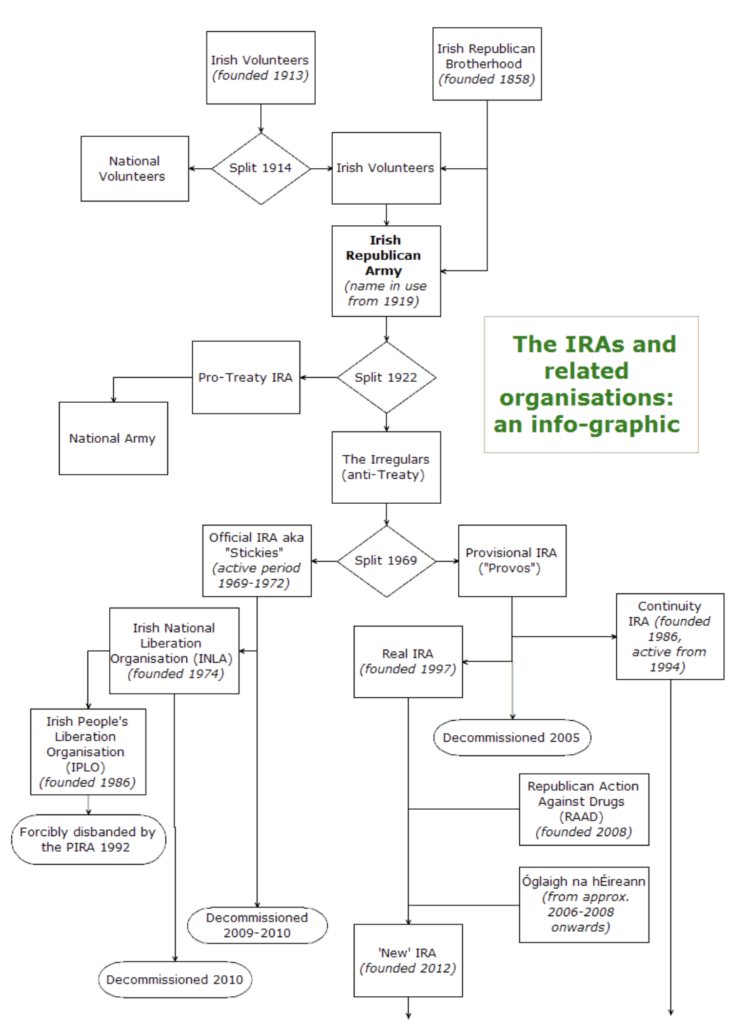The IRA, and Republicanism in Northern Ireland in general, has suffered significantly from division throughout its history. The following infographic gives a cursory overview of the various IRAs and the main dissident or violent Republican movements. In it, seventeen separate organizations and three different splits are outlined. This online exhibit will focus on the history of the Irish Republican Army following 1919, and the subsequent claimants to that throne of Irish Nationalism.

Infographic explaining the the splits in the IRA over time.
The exhibit will begin with artifacts dedicated to memorializing or paying tribute to the IRA martyrs, establishing the history which all organizations that use the name ‘IRA’ seek to claim. Following those artistic expressions— which also denigrate British and Unionist forces— the exhibit turns to the Troubles and the many break-out groups which formed during that period. The events of the Troubles as well as those which predate them are still relevant in Northern Ireland, but especially in dissident Republican circles.
Critically, these divisions are not a matter of history but of current debate. McGlinchey (2021) describes how “the New and Continuity IRAs remain wedded to an armed campaign for Irish sovereignty” while the “independent ‘dissident’ republicans, formerly
in the Provisional IRA, criticize the ongoing campaign by the groups as futile” (714). The collection of artifacts and their subject matter spans the entirety of the conflict after the Irish War of Independence. This history is clearly relevant to the conflict today, as the grievances and divisions of the past are either still present or have direct counterparts that mirror previous disagreements. The final artifacts of this exhibit explore the impacts of the current existing divisions in dissident Republicanism, contextualizing that situation in the wake of the Good Friday Agreement and the end of the Troubles.
The fissures in Republicanism are integral to understanding the movement as a whole, with the cracks becoming present at the most impactful moments in the conflict. Consequently, through tracing through the many splits in Nationalism through a variety of collected artifacts, this exhibits seeks to not only help explain Irish Republicanism, but the conflict in Northern Ireland following the 1919 partition. This collection of artifacts is made up of a diverse array of source material, including a political cartoon, official government and paramilitary press releases, and a protest song. Some of the included artifacts more directly relate to the topic of IRA divisions, such as Cathal Goulding’s statement as IRA Chief of Staff immediately before the Official/Provisional split. Others, such as The Wolfe Tones’ rendition of “Come out, ye Black and Tans” demonstrate a larger characteristic of Nationalism which is used to explain a specific divide. Together, they explain the mosaic that is Republicanism following partition.
